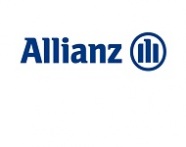Can't touch this - insuring intangible assets

Authored by Allianz
Until fairly recently, the concept of insurance was primarily concerned with the risk transfer of physical assets. However the digital revolution, coupled with unprecedented events in the socio-economic environment over the last two years, has resulted in a significant shift towards the insurance of intangibles.
Go back fifty years and companies measured their value in tangible assets, such as their premises, stock and equipment. But for today’s businesses, the value of their intangible assets has soared and in many cases, overtaken the value of their physical resources; examples include brand, reputation, intellectual property and data. Predictions vary but certain reports state that intangible assets account for 90% of portfolios among Standard & Poor’s 500 companies.1 This compares to just 17% in 1975.
Why has this shift occurred?
One factor is the digital revolution. Businesses of all sizes are increasingly moving their operations online to match consumer needs and behaviour. Adopting an e-commerce model also has the benefit of expanding a business internationally and reaching new customers and markets.
The Covid-19 pandemic has undoubtedly accelerated the move online, with a large-scale trend towards home- and flexible working. This has necessitated the widespread adoption of digital technologies, plus the proliferation of video conferencing apps. Moving employees and equipment out of offices has introduced new access points for vulnerability and brought risks such as cyber attacks and data theft sharply into focus. In turn, these risks can threaten intangible assets such as reputation and brand value.
How can businesses manage their intangible assets?
The first step for business leaders is to identify and understand the value of their intangible assets. Some reports2 place human capital, reputation and brand and intellectual property as the most valuable type of intangibles. A good approach to gauging worth is to base the value on the cost of replacing or redeveloping the asset. Alternatively, it’s sometimes possible to use current data regarding competitors’ transactions, where this is available in the market. Patents and trademarks are one such example.
A challenge with accounting for intangible assets is that only acquired assets, or those with a stated value are recorded on company balance sheets. Another consideration is that the value of an intangible asset can vary over time. Brokers are best placed to advise on suitable insurance solutions available for intangible assets, from protection against associated legal costs, loss of brand equity and the theft of intellectual property. As with traditional insurance products, insurance consumers will need to be clear on what is and isn’t covered under their policy.
Being prepared for a crisis
Another potentially useful exercise can be for companies to test their resilience, in order to prepare for a real event. This could take the form of a crisis communications exercise or a cyber attack simulation. Such rehearsals can be constructive in understanding what actions would be needed in a real-life scenario, plus the extent and implications of the loss.
What role do insurers play?
Whilst intangible assets can represent high values, assigning an accurate financial value isn’t straightforward. By comparison, tangible assets are relatively easy to insure.
Granted, the insurance industry has already evolved to create solutions for intangible risks, including cyber, intellectual property and employee negligence covers. However, with the current trend likely to continue, the industry will increasingly need to develop covers to protect the economic value derived from intangibles.
Clever use of data and analytics will be vital for developing such solutions, especially if the industry is to move away from generalised products towards those which can be tailored according to a customer’s specific need. Such data could also support the development of security incentives along different product lines, in a similar way that telematics data is used in motor policies.
Summary
All evidence points to the growing need for more insurance solutions which cater for intangible assets. This relies on a number of factors, including collaboration between risk managers and insurers, the expertise of underwriters and brokers working closely with customers to truly understand and advise on best cover for the insurable risk.
About Allianz
Allianz Insurance is one of the largest general insurers in the UK and part of the Allianz Group, a leading integrated financial services provider and the largest property and casualty insurer in the world.
The mission of Allianz Insurance is to be the outstanding competitor in our chosen markets by delivering products and services that our clients recommend, being a great company to work for and achieving the best combination of profit and growth. We aim to achieve this by putting the customer at the heart of everything we do.
Allianz is able to offer customers a wide range of products and services including home and motor and commercial insurance with full range of products and service for sole traders' right up to large commercial organisations.
Allianz Insurance employs over 4,500 people across a network of 20 offices in the UK and the company’s Head Office is situated in Guildford, Surrey. Our heritage and financial strength help make Allianz what it is today; a safe and trusted partner. Over 40 FTSE100 companies partner with Allianz. youTalk-insurance sharing Allianz Insurance news and video

